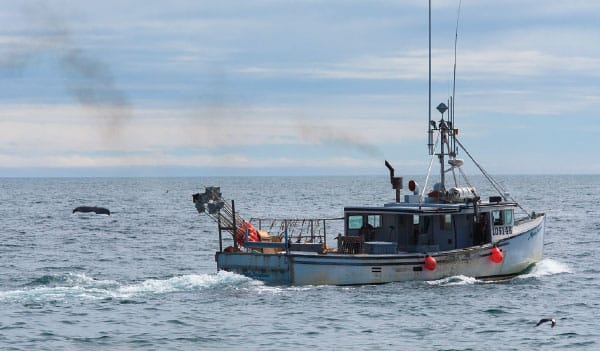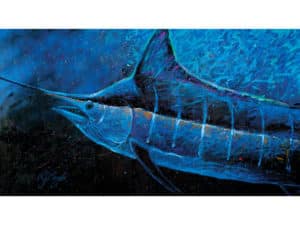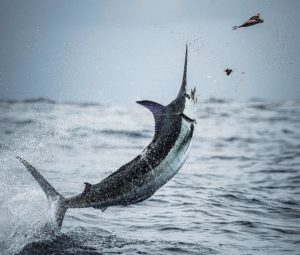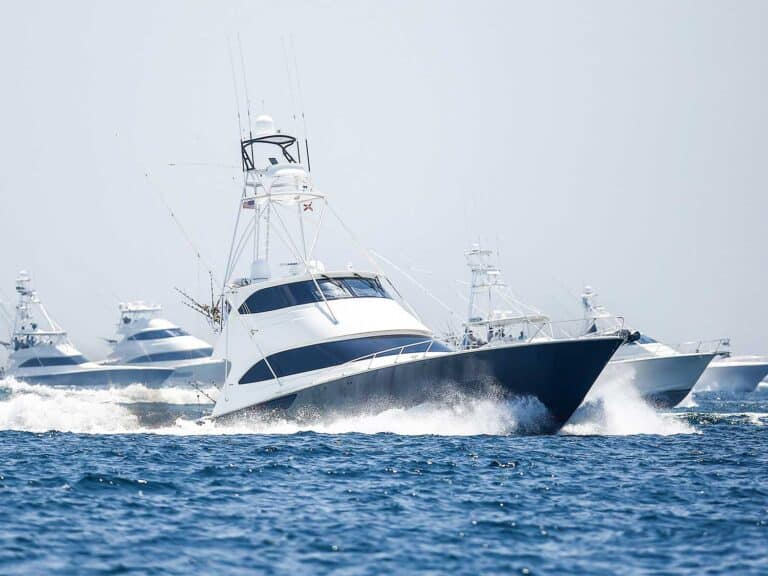
Commercial fisheries
The 8-foot tables placed end to end formed a large square. Strategically placed microphones dotted the tables around the room. On one side of the square sat representatives from the sport-fishing community and a few reps from environmental groups. On the opposite side loomed the commercial-fishing lobbyists, along with some of the fishermen they represented. On another side was a mixture of both interest groups, along with a few scientists. Some of the scientists came with obvious commercial leanings; some were known to be sympathetic to conservation interests. Nobody in the meeting held a neutral opinion on the subject at hand: the management of highly migratory species.
On the fourth side of the square sat a line of National Marine Fisheries Service (NMFS), sometimes referred to as NOAA Fisheries, representatives. The meeting was held in a hotel near NMFS headquarters, in Silver Spring, Maryland, not far from Washington, D.C.
It was one of numerous meetings that I attended as an appointed member of the NMFS Highly Migratory Species Advisory Panel, or the HMSAP, in government lingo. Mindful of the results of past HMSAP meetings, I often asked myself if it was worth the time, effort and expense to attend these meetings. The answer I gave myself was always yes. If sport fishing and conservation interests did not sit at this table, commercial-fishing interests would be the dominant influence on NMFS management decisions.
These meetings typically provided a printed agenda, which included such items as presentations on recent stock assessments, or perhaps a recent scientific paper. Often there would be open discussions on proposed management measures, or amendments to existing management regulations on billfish, tuna, swordfish or sharks, most of which were, and still are, overfished. I noticed that, often, the subjects of major interest to commercial lobbyists were placed near the beginning of the agenda. The meetings usually lasted a day and a half. The topics that were most important to recreational-fishing interests, such as billfish, often ended up at the tail end of the agenda, when attendance lagged due to early departures by those who had flights to catch.
As NMFS representatives brought up various agenda items, each member was given an opportunity to express his opinion. Not surprisingly, on the part of recreational, conservation and environmental interests, the opinions were strongly in favor of the most aggressive management measures. As it came time for commercial lobbyists and fishermen to speak, the opposite opinions were expressed. They often challenged the science behind the reasoning for tighter regulations. The complaint most often heard from commercial interests was “If you pass this regulation, you will put us out of business.” Occasionally, a lobbyist might come out with a blatant false accusation, such as that sport fishermen are selling thousands of pounds of swordfish under the table to restaurants. They claimed that they knew this because the price for swordfish on the dock for commercials was lower than they thought it should be.
After hearing all of the conflicting opinions on each topic, the group continued on to the next topic. At the end of the meeting, there was never any meaningful conclusion. No decisions were made by NMFS, at least not at that time. The whole process reminded me of the U.S. Congress, which often postpones decisions indefinitely. The difference with the HMSAP and other advisory-panel meetings is that NMFS is the authority charged with eventually making the decisions that are often unpopular with all interest groups.
The problem is that with so many opinions that are often diametrically opposed to each other, most actions taken by NMFS are a compromise. Unfortunately, if you take what would appear to be a reasonable and scientifically based course of action and dilute it in order to satisfy those whose livelihood depends on maximum exploitation, you end up with something less than what is necessary to maintain healthy marine resources. Commercial interests often lobby against necessary regulations, which eventually results in a high cost to their industry, and they then ask for government support in order to recoup their losses.
Case in Point
I witnessed the demise of an abundant swordfish resource in the 1970s, which crashed in just a few short years due to unregulated longline fishing in a known spawning ground. Swordfish regulations eventually came, but too late to prevent a highly valuable recreational broadbill fishery from being totally wiped out. Fishing tournaments and sport fishing for swords ceased to exist for about 20 years, costing the United States millions in lost revenue. I sat in on countless swordfish-management hearings during that time. As recreational representatives pleaded for controls on commercial swordfishing, commercial interests fought against each proposed regulation.
They lobbied so successfully that eventually many of the longline boats put themselves out of business, due to their greed and lack of regulations. It was only at this point, around the year 2000, that NMFS, under pressure from lawsuits, closed many of the spawning areas and locations where the highest longline bycatch occurred. At that point, the longline industry started lobbying for a bailout from the government. Ironically, their argument was that NMFS shouldn’t have allowed them to deplete the resource.
Now that swordfish resources have been rebuilt, longliners are once again lobbying to be allowed back into the very spawning areas that led to the original depletion. The worst part is that NMFS is actually considering it and has held hearings on the subject. In the past, NMFS vowed to support the longline industry with its huge bycatch of other valuable species, some of which are endangered. It continues to keep that promise and strives to make sure that the longline industry stays viable.
The image of the ruggedly independent commercial fisherman is, in most cases, a myth. Rugged? Assuredly. Independent? Not so much. Most commercial fisheries receive some form of government subsidy. Some, such as shrimp trawling in the Gulf of Mexico, probably couldn’t exist without strong support from the federal government.
Don’t get me wrong. I have plenty of friends who are commercial fishermen. Most of them are honest, hardworking, family-oriented individuals. They just have a different mind-set when it comes to fishery management. Maybe I would feel the same way if my livelihood depended on landing and selling as many fish as possible. For recreational anglers, many of whom consider it their major passion in life, the more fish that remain in the water, the better chance they have of catching, and in many cases releasing, them. Let’s also not forget about the huge support industry for sport fishing. Without lots of fish to catch, we don’t need a boat, an engine, rods, reels or trips to fishing locations.
For decades, poor fishery management led to poor fishing for both sport and commercial fishers. Even today, blue and white Atlantic marlin and several tuna species are overfished and depleted. So many species of sharks have been depleted that landing them is totally prohibited. Still, at fishery-management hearings, the two interest groups line up on opposite sides of the take-more-versus-take-less discussions.
You might think that commercial interests would be pushing as hard as sport-fishing interests for more sustainable fishery regulations. After all, it would mean more revenue for them in the long run if all of our fisheries were managed on a sustainable basis. Unfortunately, they have a different frame of mind.







